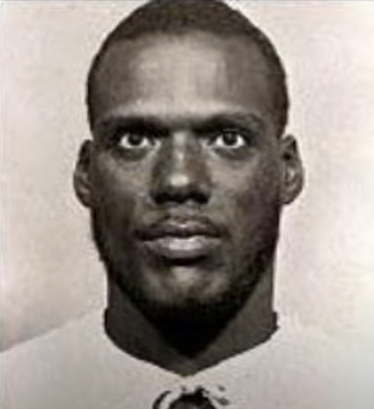
b: 1959
Harrison Graham
Summary
Name:
Nickname:
Marty / Frank / JuniorYears Active:
1986 - 1987Birth:
September 08, 1959Status:
ImprisonedClass:
Serial KillerVictims:
7Method:
StrangulationNationality:
USA
b: 1959
Harrison Graham
Summary: Serial Killer
Name:
Harrison GrahamNickname:
Marty / Frank / JuniorStatus:
ImprisonedVictims:
7Method:
StrangulationNationality:
USABirth:
September 08, 1959Years Active:
1986 - 1987Date Convicted:
April 28, 1988bio
Harrison Graham, born on September 9, 1959, in Philadelphia, was the eldest of five children. He showed signs of intellectual disability early on and struggled with school, eventually dropping out of Olney High School in 10th grade due to poor performance and frequent absences. His mother claimed he was diagnosed with a mental disorder and spent two years in a mental facility, although this remains unverified.

In the early 1970s, Graham began working in the construction industry. By 1979, he moved to North Philadelphia, a neighborhood plagued by poverty and crime, and began using alcohol and drugs. Despite his environment, he was never known for violence. In 1983, he rented an apartment in a nearly vacant complex, turning it into a hub for drug activity. Over the next four years, his apartment became a gathering place for friends and acquaintances to buy and use drugs, primarily Ritalin. Graham maintained a relatively peaceful demeanor, paid his rent on time, played basketball with local youth, and was considered a nice man by those who knew him, living off his disability pension.
murder story
During the summer of 1987, neighbors complained to the landlord about a foul odor coming from Harrison Graham's apartment. Despite multiple warnings, Graham ignored them. On August 9, the landlord demanded Graham vacate the premises. Refusing to let anyone in, Graham boarded up the front door, collected his belongings, and fled via the fire escape. Unable to enter the apartment, the landlord called the police, who discovered the naked body of a woman, a partially dressed corpse, blood traces, drugs, and layers of garbage 40 centimeters high. They also found dirty mattresses, a skeleton, and more skeletal remains in a closet. On the roof, investigators found a duffel bag containing more bones, while excavating the basement revealed another skull, ribcage, and pelvic bone. Determining the exact cause of death for most victims was challenging due to decomposition, but two were confirmed as strangulation victims.

Graham was put on a wanted list, and was seen at various locations but avoided arrest. On August 17, his mother convinced him to surrender, leading to his arrest by Philadelphia Police. He readily confessed to the murders, explaining that he strangled the women after sharing drugs with them. The first murder occurred at the end of 1986, with one victim killed to prevent her from exposing another murder. Forensic exams confirmed that two victims were strangled shortly before discovery, while the other five had been dead for several months. The victims were identified as Cynthia Brooks, Valerie Jamison, Mary Jeter Mathis, Barbara Mahoney, Robin DeShazor, Sandra Garvin, and Patricia Franklin. DeShazor had been Graham's longtime girlfriend.
Graham's trial began on March 7, 1988. He waived a jury trial, admitting his guilt. Prosecutors sought the death penalty, while his lawyer argued for leniency due to Graham's intellectual disability and heavy drug use, which impaired his ability to control his actions. Throughout the trial, Graham remained calm. On April 28, 1988, he was found guilty on all charges, receiving six death sentences and one life term. The court ruled that his death sentences would only be carried out after his life term, effectively ensuring he would never be executed. After the trial, Graham requested the return of his Cookie Monster doll, which had been taken upon his arrest, as it was one of the few items he took with him when he fled his apartment.